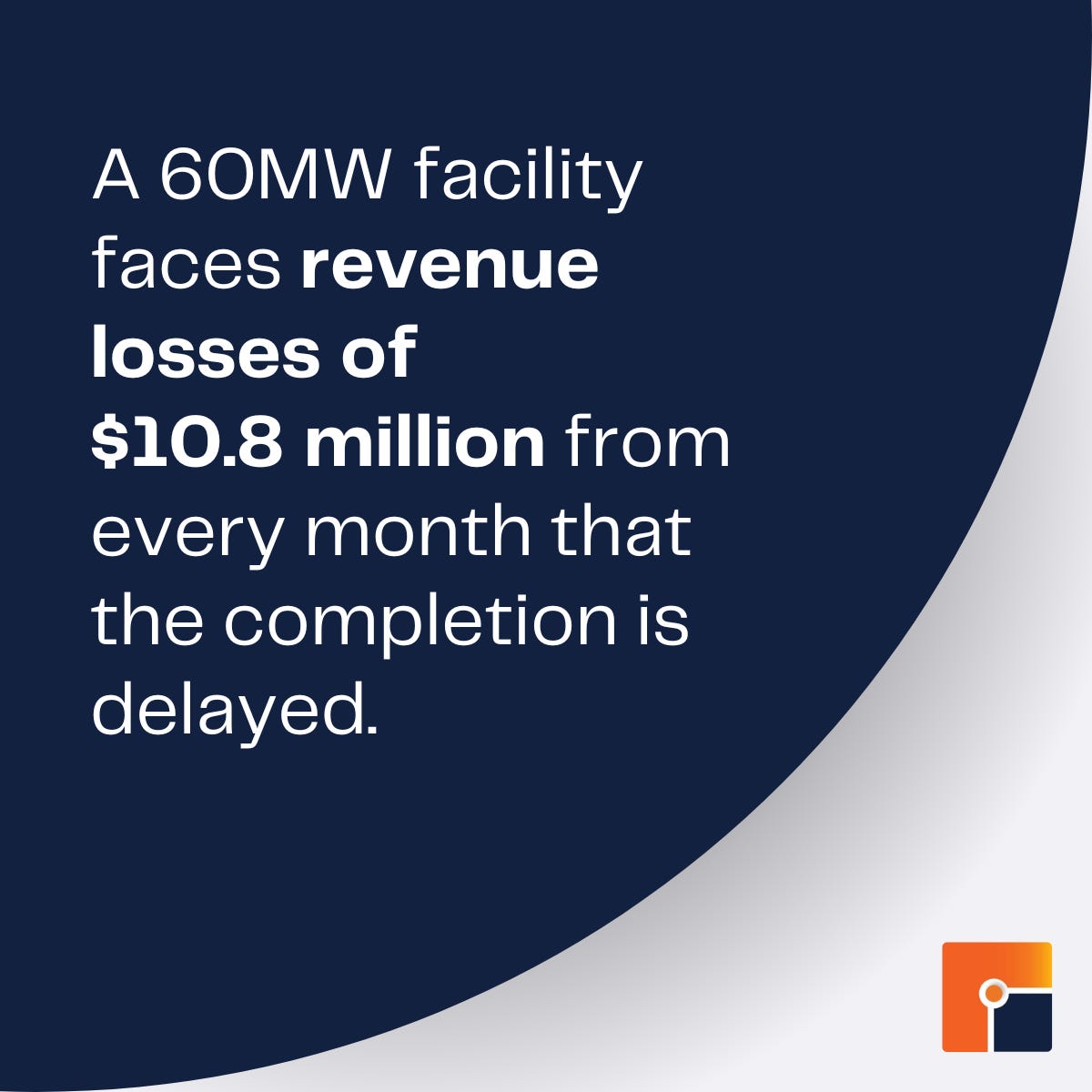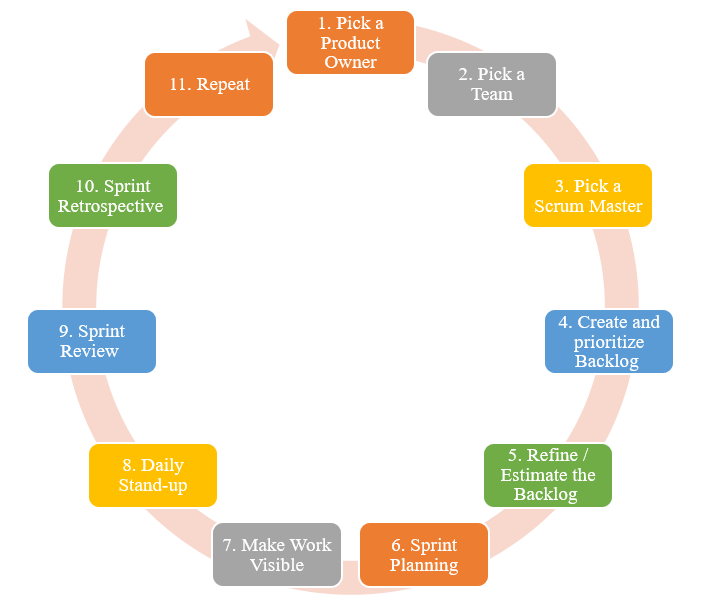How Teams Are Delivering Projects 200% Faster (And You Can Too)
The proven framework that helped John Deere dominate during COVID while competitors struggled.
👋 Hey, Kyle here! Welcome to The Influential Project Manager, a weekly newsletter covering the essentials of successful project leadership.
Today’s Overview:
While Amazon ships features daily and John Deere crushed COVID supply chain challenges, most construction teams are still delivering projects the same way they did 20 years ago.
Every day you delay adopting proven frameworks like Scrum, your competitors gain 200% productivity advantages while you're left managing crisis after crisis instead of building systems that compound over time.
This 11-step Construction Scrum framework will show you exactly how to transform any critical milestone (like a slab pour) into a predictable, accelerated delivery system that catches problems early and doubles your team's velocity.
STOP MULTI MILLION-DOLLAR DELAYS BEFORE THEY START.
Traditional reporting shows what went wrong. Foresight prevents it from happening.
Data center and other complex project leaders are using predictive insights to prevent $10.8M+ in monthly losses—before critical delays hit their timelines.
New whitepaper with STL Partners reveals:
How predictive analytics identify risks 3-6 months ahead
Which warning signs predict the costliest delays
Real case studies of prevented multi million-dollar losses
Get the insights that turn your reporting from reactive to predictive.
Download the Whitepaper | Foresight.works
🚀 How Teams Are Delivering Projects 200% Faster (And You Can Too)
Filed under: Project Management, Frameworks & Tools
Amazon ships new website features every single day.
The FBI built their massive terrorist-tracking database in just 18 months after years of failed attempts.
John Deere crushed their supply chain challenges during COVID while competitors scrambled.
What's their secret weapon?
Scrum.
I stumbled onto this framework two years ago when several Lean Construction folks kept recommending Felipe Engineer-Manriquez’s book "Construction Scrum: How to Deliver Projects Easier, Better, & Faster." Honestly, I was skeptical. Another management fad? But productivity gains of 200 percent got my attention.
After devouring the 26-page Scrum Guide and Jeff Sutherland's "Scrum: The Art of Doing Twice the Work in Half the Time," I decided to test it. We deployed it on a critical slab pour, and the results blew me away. We finished 2 days early, caught 3 potential issues before they became $50K+ problems, and our team velocity increased 180% compared to similar pours. The momentum we generated was unlike anything I'd experienced in 10+ years of project management.
This guide will show you exactly how to apply Scrum to your construction projects—no fluff, just the framework that's transforming how the best teams deliver.
What is Construction Scrum?
Imagine a hockey team. Players don’t follow predetermined plays—they constantly read the ice, pass the puck, and adapt as one unit toward one goal. Pure reaction, adaptation, and forward movement.
That’s exactly how Scrum works—a lightweight framework that helps construction teams generate value through adaptive solutions for complex building projects.
The process is beautifully simple:
A Product Owner (your Superintendent or Senior PM—the person closest to the actual work) breaks down complex work into a prioritized Project Backlog.
The Construction Team turns a selection of work into a Working Building System during a Sprint (typically 1-4 weeks).
The team inspects the results and adapts for the next Sprint.
Repeat.
It's deliberately minimal—defining only essentials while leveraging your team’s collective intelligence.
Why Scrum Works in Construction
Scrum is founded on two foundational principles empiricism and lean thinking.
Empiricism means knowledge comes from experience and making decisions based on what is observed.
Lean thinking reduces waste and focuses on essentials.
It thrives on three pillars of execution:
Transparency: Work progress must be visible to those doing the work and those receiving it. Important decisions are based on the actual state of building systems, not reports or promises.
Inspection: Building work and progress toward goals must be inspected frequently to detect problems early when they’re still cheap to fix.
Adaptation: If any process deviates or the building work is unacceptable, adjustments must be made immediately to minimize further problems.
Modern platforms like Foresight supercharge these pillars by providing real-time project intelligence that makes transparency automatic, inspection continuous, and adaptation data-driven.
The 5 Values That Drive Success
Commitment: To Sprint goals and each other
Focus: On Sprint work for maximum progress
Openness: About challenges and roadblocks
Respect: For each other as professionals
Courage: To tackle tough problems head-on
I love how all of these value resonate deeply with The Influential Project Manager ethos.
The Construction Scrum Team (3-10 People)
The fundamental unit is a small Construction Team consisting of 3-10 people:
One Scrum Master: Facilitates the process (often the Project Manager)
One Product Owner: The person closest to the work or outcome—usually your Superintendent or Senior Project Manager who can make daily decisions about priorities and trade-offs.
The Builders: Project Engineers, Assistant Project Managers, Superintendents, Trade Managers, Foremen, etc.—anyone creating value.
No hierarchies. No sub-teams. Just a focused unit working toward one Sprint Goal. The ideal size is 10 or fewer people. Smaller teams communicate better and are more productive.
The 4 Events That Drive Results
Sprint Planning: Define the Sprint Goal and select work (max 8 hours for 1-month Sprint)
Daily Scrum: 15-minute daily sync to inspect progress and adapt plans
Sprint Review: Present completed work to stakeholders and plan next steps
Sprint Retrospective: Identify improvements for the next Sprint
11 Steps to Your First Scrum Victory
Now you're ready to follow the 11-step process I used to start with Scrum in Construction. In my case, I applied these 11 steps and delivered a critical slab pour two days ahead of schedule while avoiding three major issues that could have cost us weeks.
1. Pick a Product
My pilot involved a critical slab on grade pour. For the slab to be considered "done" meant it was poured, finished, cured, and ready for structural steel to begin.
Pro tip: Start with a critical activity or milestone that has clear completion criteria and generates value in the eyes of the customer.
2. Assemble Your Team
In Scrum, teams need the competency to complete all work in their backlog. Since this pilot focused on slab work, our team included the superintendent (closest to the work), concrete foreman, MEP foreman, field engineer, procurement lead, and myself.
3. Pick a Scrum Master
I was our Scrum Master since I had done the prep work on understanding Scrum principles.
4. Create and Prioritize Backlog Items
Each task was written on individual sticky notes and placed in our 'To Do' column. I ordered by critical path dependencies—RFIs first, then change order for design changes, then layout, then procurement, then execution.
5. Refine/Estimate the Backlog
I reordered tasks based on daily feedback from the superintendent and what the owner's rep needed to see first for approval processes.
6. Conduct Sprint Planning
Spent 30 minutes organizing and communicating the two-week Sprint goal: "Ready-to-pour slab with all materials staged and access cleared."
7. Make Work Visible
Used a whiteboard (or screen) with sticky notes on the construction office wall showing ‘To Do’ → ‘Doing’ → ‘Done’. columns. Anyone walking by could instantly see our status.
This visibility was crucial: The owner's rep spotted a potential conflict with the fire protection layout just by glancing at our board.
8. Hold Daily Stand-Ups
Every morning, the team gathered for 15 minutes to 'walk the board.' Each member answered three questions:
What did I complete yesterday toward the Sprint goal?
What will I do today?
What's blocking me?
9. Conduct A Sprint Review
Short team meeting at Sprint end to evaluate what was accomplished and get stakeholder feedback.
10. Conduct A Sprint Retrospective
Asked four focused questions:
What went well?
What could be better?
What improvement can we make now?
What was our velocity?
Our key learnings:
What went well: Early problem detection, improved communication
What could be better: Initial backlog estimation was too conservative
Improvement for next Sprint: Include subcontractors in daily standups
Velocity: Completed 12 backlog items vs. 7 in similar traditional approaches
11. Repeat
The momentum was addictive. The team immediately asked when we could use Scrum on the next critical milestone.
We completed everything two days early, caught three potential issues before they became problems, and the pour went flawlessly. Our velocity doubled compared to similar pours.
TL;DR - Just Start!
Don’t worry about finding the perfect project, or perfect time. As Dr. Jeff Sutherland says, “just start.” In my experience, you’ll be glad you did.
Pick one upcoming project milestone. Define your team of 3-10 people. List everything needed to complete it (your backlog). Plan a 1-2 week Sprint. Create the definition of done. Make progress visible daily. Inspect and adapt.
Your construction projects are about to get dramatically easier, faster, and more predictable.
The companies dominating their industries aren't just working harder—they're working with frameworks like Scrum that multiply their capacity while reducing chaos.
Construction is changing fast. The teams that adopt these methodologies will lead. The ones that don't will watch from behind.
Challenge questions for your team:
What project or phase could benefit from this approach?
Who would be your ideal Product Owner (closest to the work)?
What's the biggest obstacle preventing you from trying this next week?
Based on your observations, what goal will you tackle with your first Sprint?
Until next week,
Kyle Nitchen
P.S. Ready to implement Scrum principles with the visibility to make them truly effective? Foresight's platform combines agile methodologies with predictive risk intelligence, helping teams shift from reactive firefighting to proactive project leadership. See how construction teams are achieving breakthrough results—schedule your demo today.

Whenever you’re ready, here are 4 ways I can help you lead:
Read my Book. No Bullsh*t Project: A Project Manager’s guide to successful project leadership.
Install ProjectOS. My complete operating system for project leaders and their teams. A done-for-you toolkit—templates, agendas, KPI’s, and workflows—to run complex projects like a pro. (Our most popular product).
Join Antifragile Project Management. Supercharge your project leadership. My flagship program combining training, tools, and community. Book a discovery call to learn more.
Promote Your Business. Get your brand in front of 8,000+ highly engaged construction leaders and decision-makers with a 51% open rate.








Concrete is “placed.”